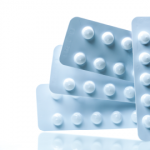NEW YORK (Reuters Health)—Dual energy computed tomography (DECT) can differentiate cardiovascular monosodium urate (MSU) deposits from calcium deposits in patients with gout, potentially identifying those at risk of heart disease, researchers say.
Sylvia Strobl, MD, of Medical University Innsbruck and colleagues analyzed calcium scores and MSU deposits in 59 patients with gout (mean age: 59; 78% men) and 47 controls (mean age: 70; 60% men), all of whom underwent DECT at the university’s rheumatology clinic. They also studied the same values with DECT from six cadavers (mean age at death: 76; range: 50% men).
As reported online Sept. 11 in JAMA Cardiology, cardiovascular MSU deposit frequency was higher among patients with gout (86.4%) compared with controls (14.9%). Similarly, coronary MSU deposits, specifically, were more frequent among patients with gout (32.2%) versus 4.3%).1
Coronary calcium scores also were significantly higher among patients with gout (900 Agatston units vs. 263 AU), and were significantly higher among the 58 individuals with cardiovascular MSU deposits (950 AU) vs. 48 without MSU deposits (217 AU).
Among the six cadavers, three showed cardiovascular MSU deposits, including one with deposits in the thoracic aorta, one with deposits in the coronary arteries, and one with deposits in the thoracic aorta, coronary arteries, and mitral valve.
“Our study demonstrates the feasibility of DECT to image MSU deposits in coronary arteries and the thoracic aorta, (and) underscores the potential importance of DECT in a comprehensive cardiovascular examination of patients with gout,” the authors state.
Rupak Thapa, MD, assistant professor, Rheumatology and Immunology at Wake Forest Baptist Health in Winston-Salem, N.C., comments in an email to Reuters Health, “DECT is a relatively recent development in the imaging of gouty arthritis. In the hands of an experienced radiologist, it can detect the gouty tophi—i.e., deposition of monosodium urate crystala—in the soft tissue of gout patients with good sensitivity.”
“This technology is already becoming popular as it is non-invasive and the patient does not need to have joint effusion, which is the requirement for arthrocentesis, the standard test to confirm gout,” he said.
“In terms of the clinical applicability, clinicians should discuss the importance of cardiovascular health—e.g., paying attention to blood pressure, smoking cessation, increasing physical activity, cholesterol monitoring, etc.—in any of their patients with gout,” he said.
“For the research community,” he adds, “the finding [points to the need to conduct] additional studies to address issues such as: Is the association between gout and cardiovascular disease a mere co-existence due to the similar risk factors (metabolic syndrome with truncal obesity, hypertriglyceridemia, hypertension, insulin resistance, and hyperuricemia) or is there any causal relationship between them, too? Does the treatment of gout in this patient population reduce the risk of cardiovascular diseases?”
“Overall,” he concludes, “this study has provided a novel and non-invasive way of looking at the relationship between gout and cardiovascular disease and has clinical applicability, especially if the similar findings can be reproduced in the future studies.”
Aryan Aiyer, MD, director, UPMC Heart and Vascular Institute Lipid Clinic, tells Reuters Health the study “lends further credence to the well-established notion that certain systemic inflammatory conditions may increase cardiovascular risk.”
“What is unclear is if the detection of MSU deposits is a new, independent marker of risk,” he said by email. “That cannot be concluded from this study. Further studies need to be done to clarify this association and the mechanisms involved.”
“Another huge drawback of this study is the small sample size involved,” he noted. “These findings need to be replicated in a larger sample of patients.”
“DECT is not ready for prime time use in a clinical setting, as it has not been established that measuring MSU deposits can improve coronary risk prediction above current risk models,” he said.
“What clinicians may cautiously observe from this study is that the prevalence of coronary calcium was noted to be higher in the group of patients with gout,” he added. “If clinicians are unclear about coronary risk in patients with gout, quantitative coronary calcium assessment with low-dose CT could potentially be useful to individualize that patient’s coronary risk.”
Dr. Strobl did not respond to requests for a comment.
Reference
- Klauser AS, Halpern EJ, Strobl S, et al. Dual-energy computed tomography detection of cardiovascular monosodium urate deposits in patients with gout. JAMA Cardiol. 2019 Sep 11. [Epub ahead of print]
